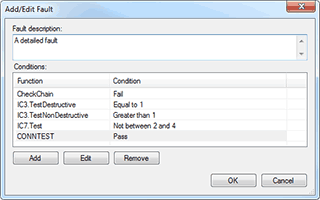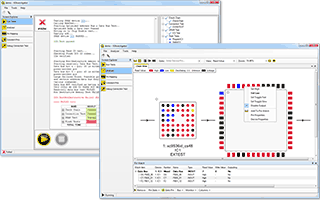Welcome to the XJTAG support blog
This is your go-to space for tips, insights, and updates straight from the XJTAG development and support team. We’re here to help you get the most out of your XJTAG system by sharing our knowledge, experience, and best practices. You’ll find posts highlighting particular features of the different software packages that make up the XJTAG development system or aspects of the XJEase language.
Have a topic you’d like us to cover or a question you want answered? Let us know!
For product updates check out the Updates Hub.
Fault Dictionary
One of the new features in the recent v3.1 software release is a Fault Dictionary. This release cycle, one of our main goals was to make XJTAG more production friendly, and the fault dictionary provides a way of sharing relevant knowledge about a board between development and production engineers. […]
Using XJTAG 3.1 with LabVIEW
The latest version of XJTAG, version 3.1, is built using the .NET 4.0 framework. To use the latest version of the XJRunner Integration assembly within LabVIEW, LabVIEW must first be configured to accept .NET 4.0 assemblies. […]
XJEase Editor Improvements in v3.1
The XJEase editors in XJDeveloper are now more intelligent – allowing you to write and navigate around your XJEase code faster. […]
An overview of XJInvestigator
XJTAG version 3.1 sees the introduction of a new application, XJInvestigator. This post aims to provide a quick tour of the application and its features. […]
Exporting ODB++ from the Mentor Graphics tool PADS
We have had several customers having problems exporting ODB++ jobs from PADS, where all the net information is lost. In the ODB++ Export dialog, ensure that “Neutralize nets” is unchecked. […]
XJTAG version 3.1
A new major version of XJTAG – version 3.1 – is now available from our website for users who are in maintenance. […]


